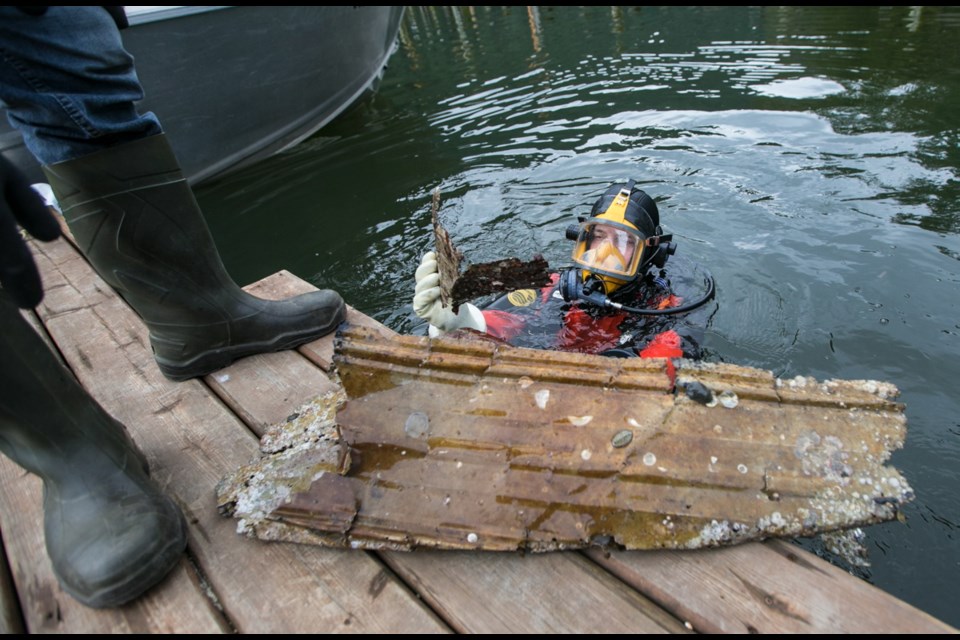Dive supervisor Jamie Smith pulls a starfish and crab from a large piece of aluminum at the end of a dock at Tod Inlet.
One of his divers has just collected the metal from the ocean floor. It joins a growing pile of debris a few feet away, the items bound for a recycling plant and landfill.
“It creates life. But when it deteriorates, it leaves chemicals in the water,” Smith says.
Wednesday was the first day divers entered the water as part of a $90,000 cleanup of the Tod Inlet ocean floor. The work is being done by SeaChange Marine Conservation Society, in partnership with the Tsartlip First Nation and B.C. Parks.
“We want to free up the seabed for eventual recovery of plants such as eel grass, which is an excellent nursery for young salmon and cutthroat trout,” said executive director Nikki Wright.
“Tod Inlet is a very special place … but it has a long history of damage caused by the cement manufacturing by the Vancouver Portland Cement Company and by leachate coming from the landfill.”
Robert Butchart’s Vancouver Portland Cement Company operated a manufacturing facility in the area between 1906 and 1921, while leachate runoff fed into the inlet until the early 1990s.
Both of those activities have stopped, but the damage remains and has been joined by new sources of toxins, such as sunken boats.
Wright said members of the conservation organization found a “moonscape” when they first dove in the area 15 years ago as part of a smaller cleanup effort.
“I was amazed. Going under water, there was no life, no vegetation and quite a bit of debris,” she said.
The new project began last summer with students mapping the ocean floor with cameras and GPS. Sonar mapping followed. White markers now dot the water’s surface at spots where abnormal shapes were identified.
The divers will grab what they can. Larger items, such as boat hulls, will be lifted with a crane and barge.
Removing older debris will inevitably cause some disruption to the ecosystem, but Wright said the benefits outweigh the costs.
“I’m sure we will be harming a few barnacles and maybe some mussels, but I think the overall effect will be a net gain in proceeding to make fish habitat and marine life more viable,” she said.
“If we can create water quality that’s suitable for fish, then we bring in all kinds of other life. The basic foundation is habitat.”
The project is funded in part by the Recreational Fisheries Conservation Partnerships Program and the Pacific Salmon Foundation.
The seabed cleanup, which continues through February, is part of a larger restoration. Invasive species including blackberry bushes have already been removed and native species such as willows and maples have been planted.
The next step is the restoration of Tod Inlet Beach, where cement, clay brick and tile manufacturing occurred.
The beach restoration is planned for Feb. 8 to 15.



